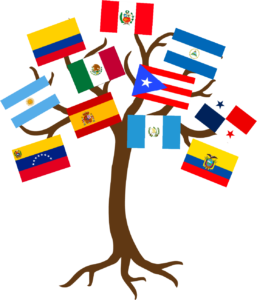
Hispanic Heritage Month, starting Sept. 15 and ending Oct. 15, celebrates the culture and lives of Americans whose ancestors came from Spain, the Caribbean, Mexico and Central and South America.
In 1968, Hispanic Heritage Week was declared by Congress, beginning Sept. 15 of every year. In 1988, the Reagan Administration extended it to a month. The change allowed more celebrations to take place to honor Hispanic achievements.
“Hispanic Heritage Month is aligned with a group of historical events,” Ferris history professor Jana Pisani said. “On Sept. 15, Costa Rica, El Salvador, Guatemala, Honduras and Nicaragua gained their independence. On Sept. 16, Mexico gained its independence. Chile did so on Sept. 18 and Belize on Sept. 21. Columbus Day is also Oct. 12, so it fits into this month-long time frame of Sept. 15 to Oct.15.”
The Congressman who pushed the initial resolution in 1968 to recognize Hispanic Heritage Week was George E. Brown of California. According to the United States National Archives, the resolution’s purpose was to recognize the influence and role Hispanic people played in American history.
Congressman Brown’s resolution mentioned locations with Hispanic names, and cities that were developed with the help of Hispanic communities. The National Archives quote the resolution as saying that the “Spanish surnamed population has contributed the highest proportion of Medal of Honor winners through acts of bravery and determination in the defense of our land.”
In 1988, Senator Paul Simon of Illinois issued a bill to extend the week into a month. The National Archives explains that Senator Simon’s bill was “the companion bill” to a bill from Representative Esteban Torres of California. Representative Torres’ bill explained that a month would better celebrate the accomplishments of Hispanic Americans. Despite Representative Torres’s bill dying in committee, Senator Simon’s bill passed and was signed into law.
Today, the Hispanic population is more than 62 million, according to the Pew Research Center. This marks a 23% increase from 2010. The Pew Research Center also states that “Hispanics have become the largest racial or ethnic group in California.”
The United States Census Bureau states that 18.5% of the population is of Hispanic or Latino origin. The Census Bureau also states that in Michigan, 5.3% of the population is of Hispanic or Latino origin.
“Every sitting president since George H.W. Bush has made National Hispanic Heritage Month proclamations,” Pisani said.
The trend continued this year, with President Joe Biden beginning his proclamation with “we recognize that Hispanic heritage is American heritage.”
